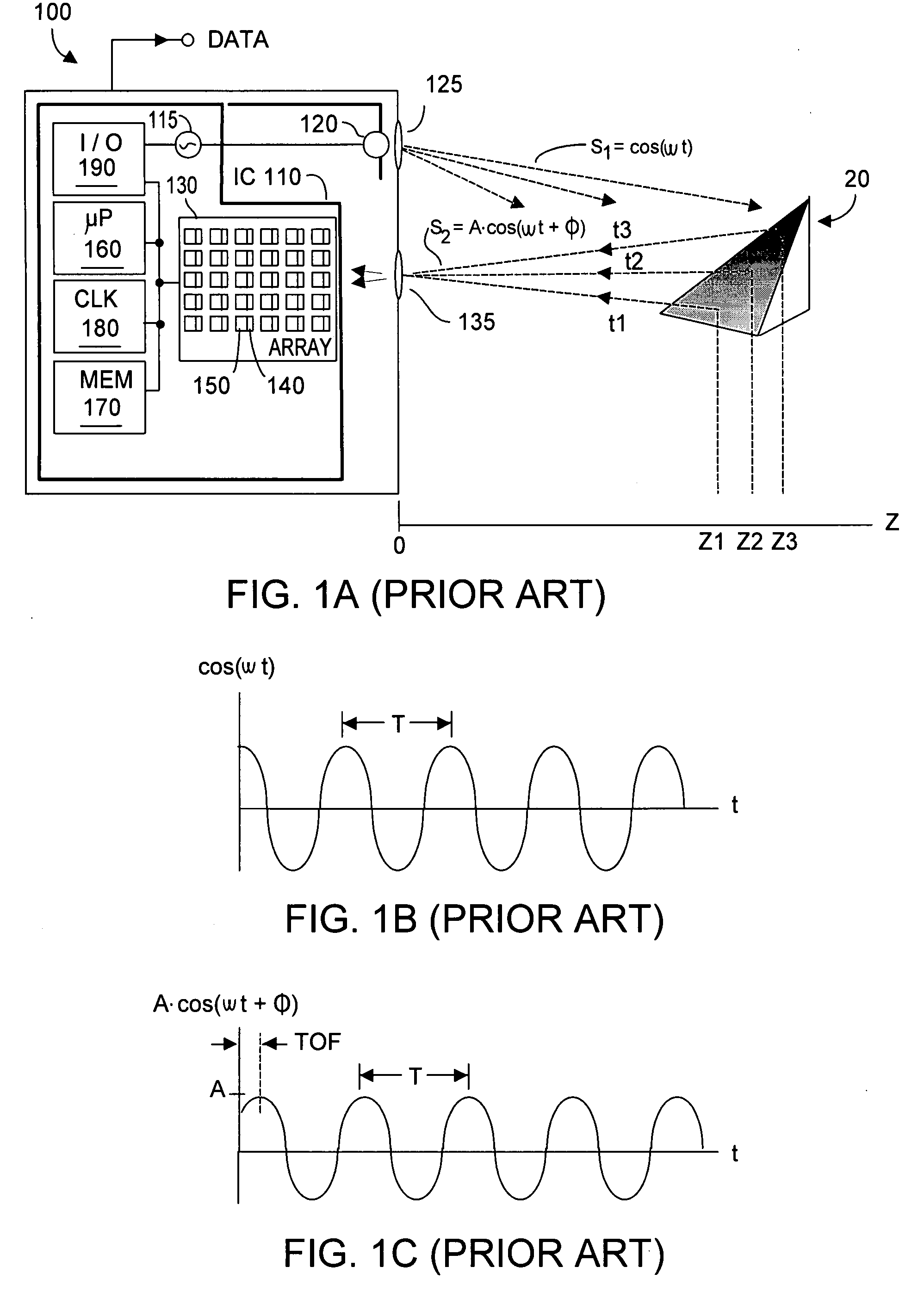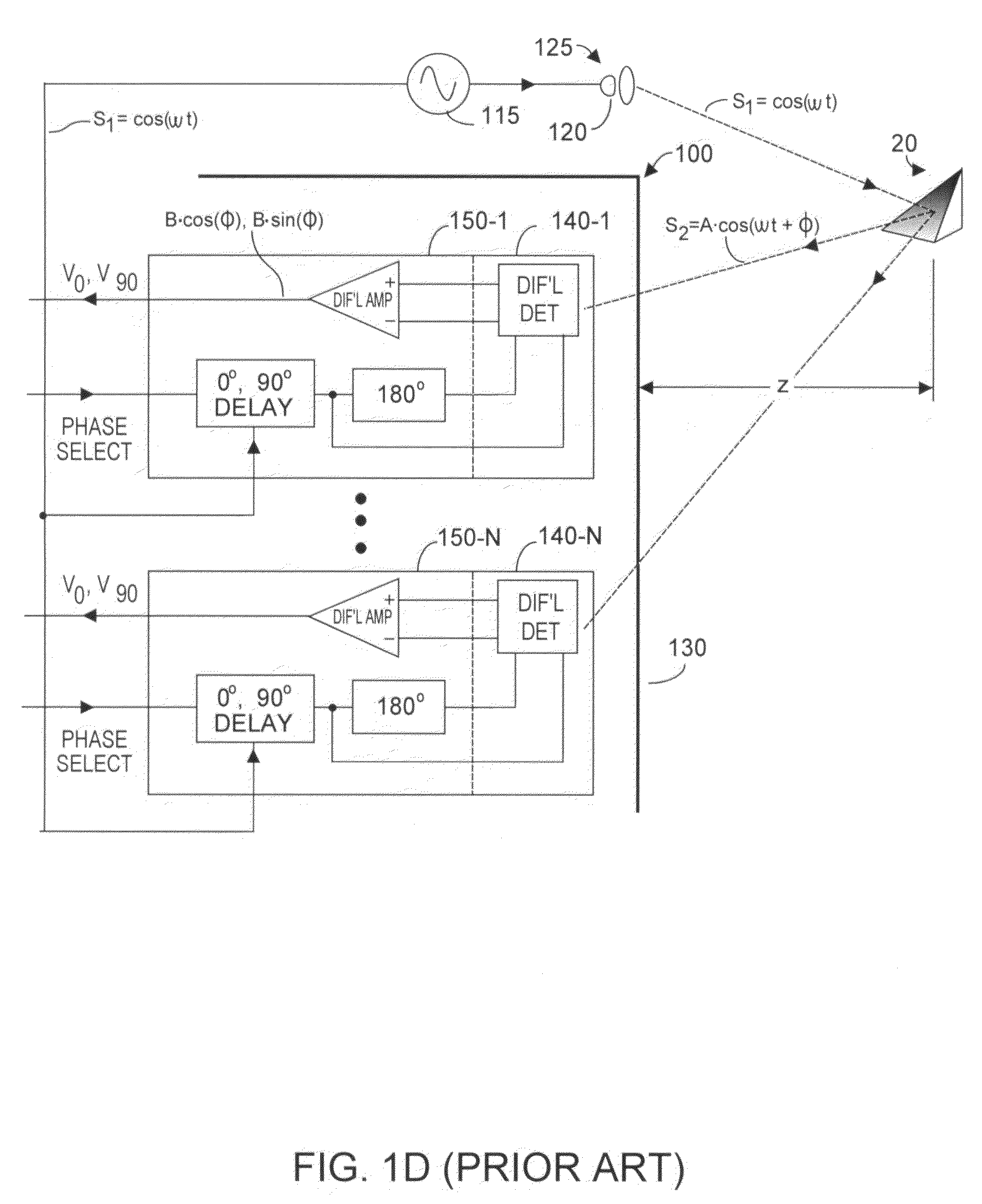Method and system to avoid inter-system interference for phase-based time-of-flight systems
a technology of phase-based time-of-flight and detection system, applied in the field of methods and systems, can solve the problems of determining erroneous data, affecting active light emitted by one system could interfere with the detection of reflected light emitters, so as to reduce the likelihood of inter-system interference between adjacent phase-based tof systems
- Summary
- Abstract
- Description
- Claims
- Application Information
AI Technical Summary
Benefits of technology
Problems solved by technology
Method used
Image
Examples
Embodiment Construction
[0042]As noted, typically in prior art phase-based TOF systems, a high quality clock generator 180 (FIG. 1A) is employed. Understandably, implementing highly stable, low noise oscillators or clocks can be expensive. As will now be described, the present invention takes an approach quite opposite to the prior art in that noise in the high frequency clock signal is affirmatively nurtured. Referring now to FIG. 3, a phase-based TOF system 300 is shown in which prior art clock generator 180 is replaced with a clock generator system 400, according to the present invention.
[0043]Clock generator system 400 implements at least one and preferably two mutually complementary aspects to reduce the cross-correlation product P12. Advantageously, the present invention can randomize potential interference within a pixel detection integration period T, although randomization could also be employed across period T as well. Such randomization of interference within or across a detection interval can o...
PUM
 Login to View More
Login to View More Abstract
Description
Claims
Application Information
 Login to View More
Login to View More - R&D
- Intellectual Property
- Life Sciences
- Materials
- Tech Scout
- Unparalleled Data Quality
- Higher Quality Content
- 60% Fewer Hallucinations
Browse by: Latest US Patents, China's latest patents, Technical Efficacy Thesaurus, Application Domain, Technology Topic, Popular Technical Reports.
© 2025 PatSnap. All rights reserved.Legal|Privacy policy|Modern Slavery Act Transparency Statement|Sitemap|About US| Contact US: help@patsnap.com



